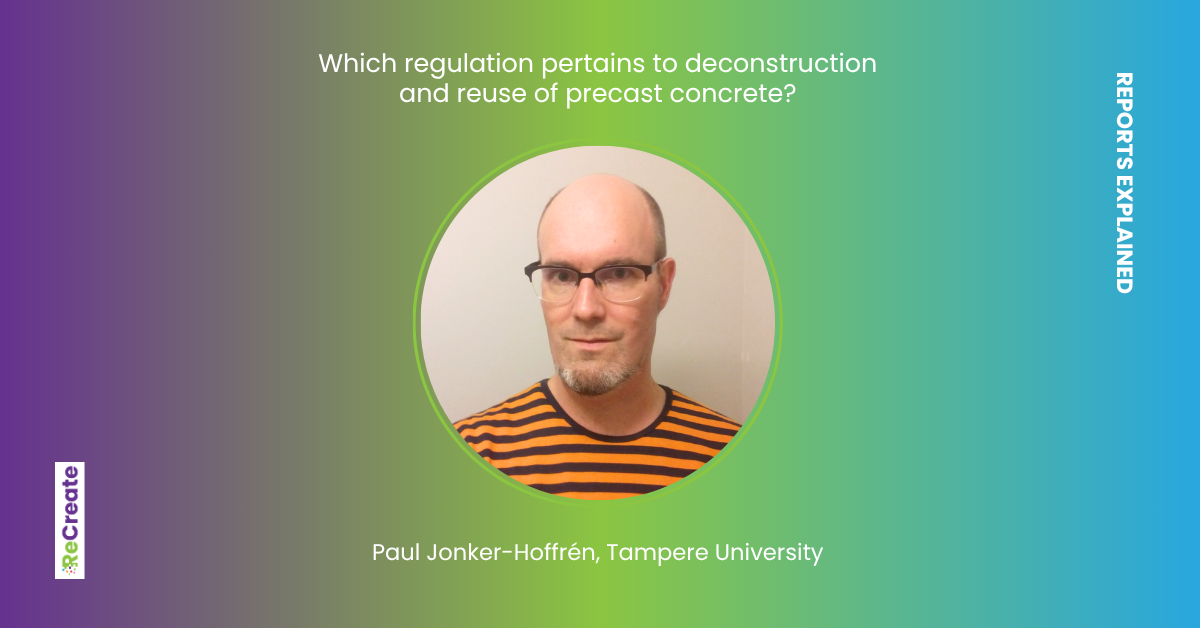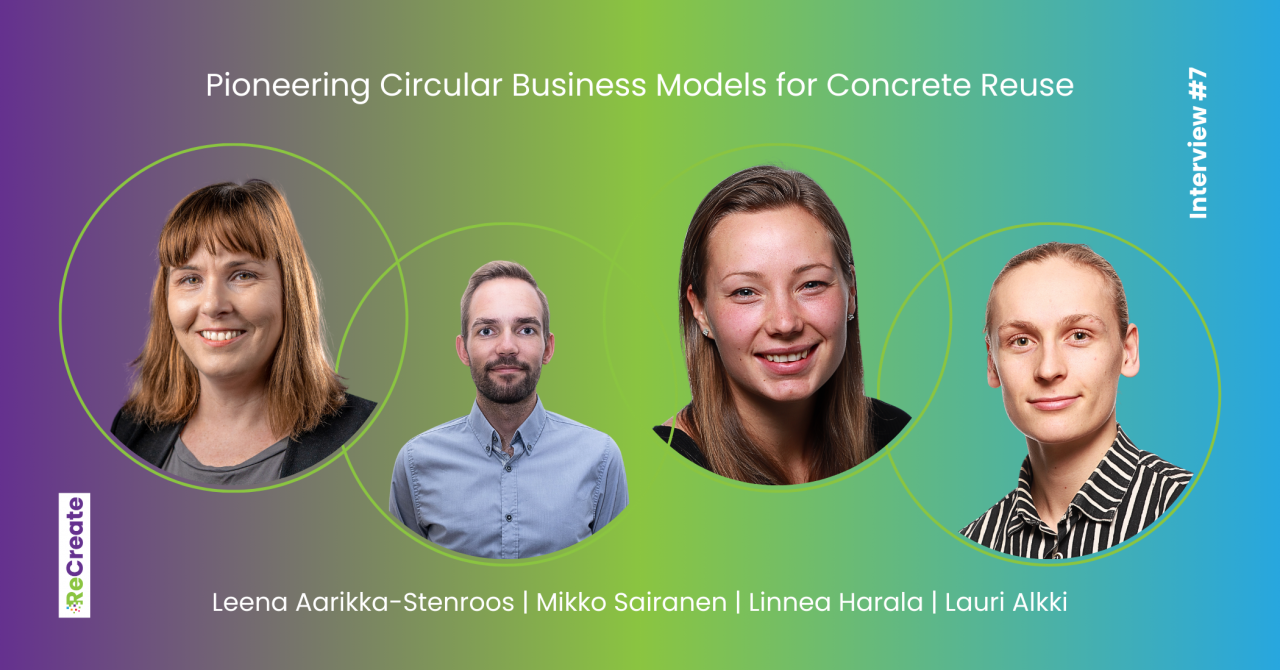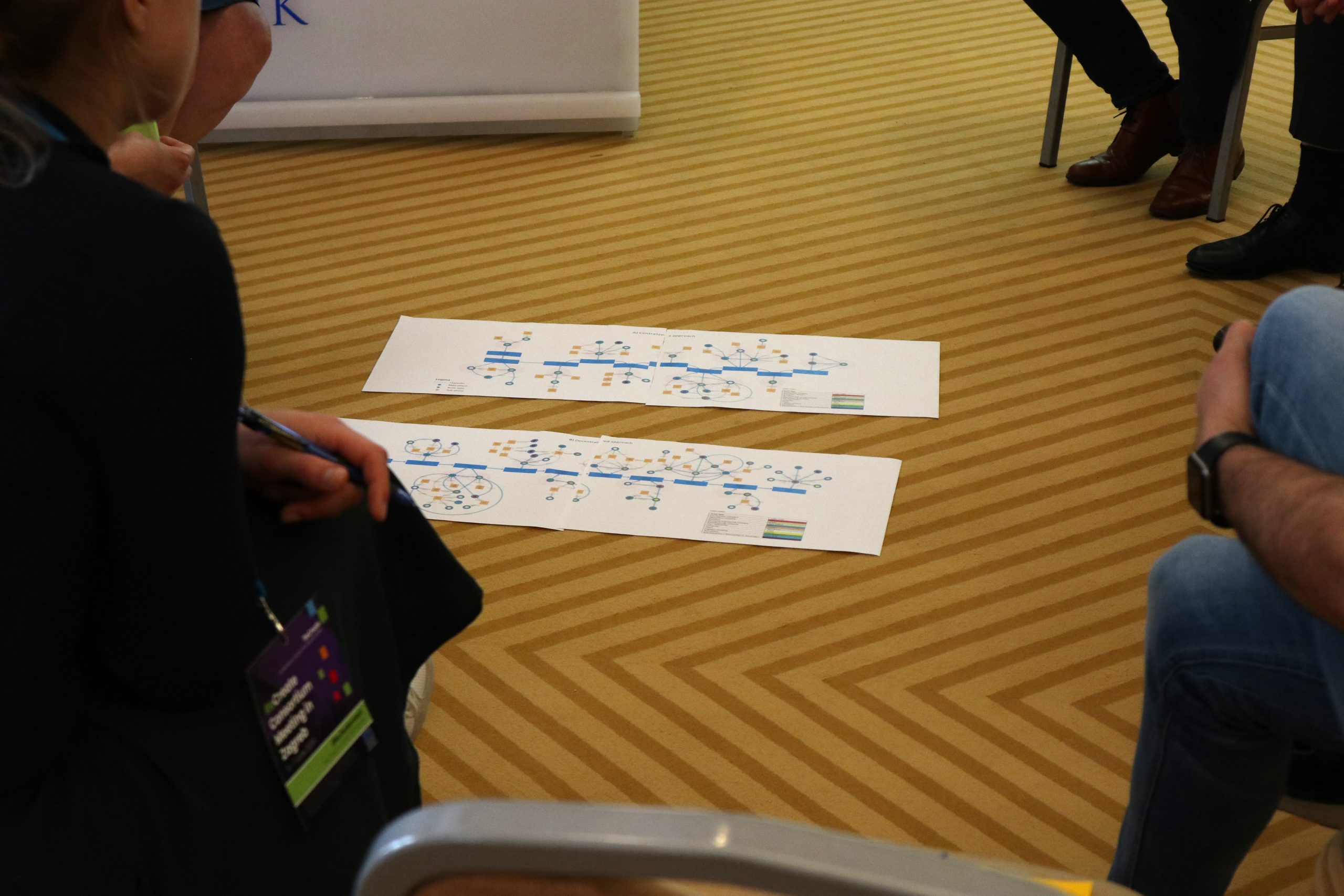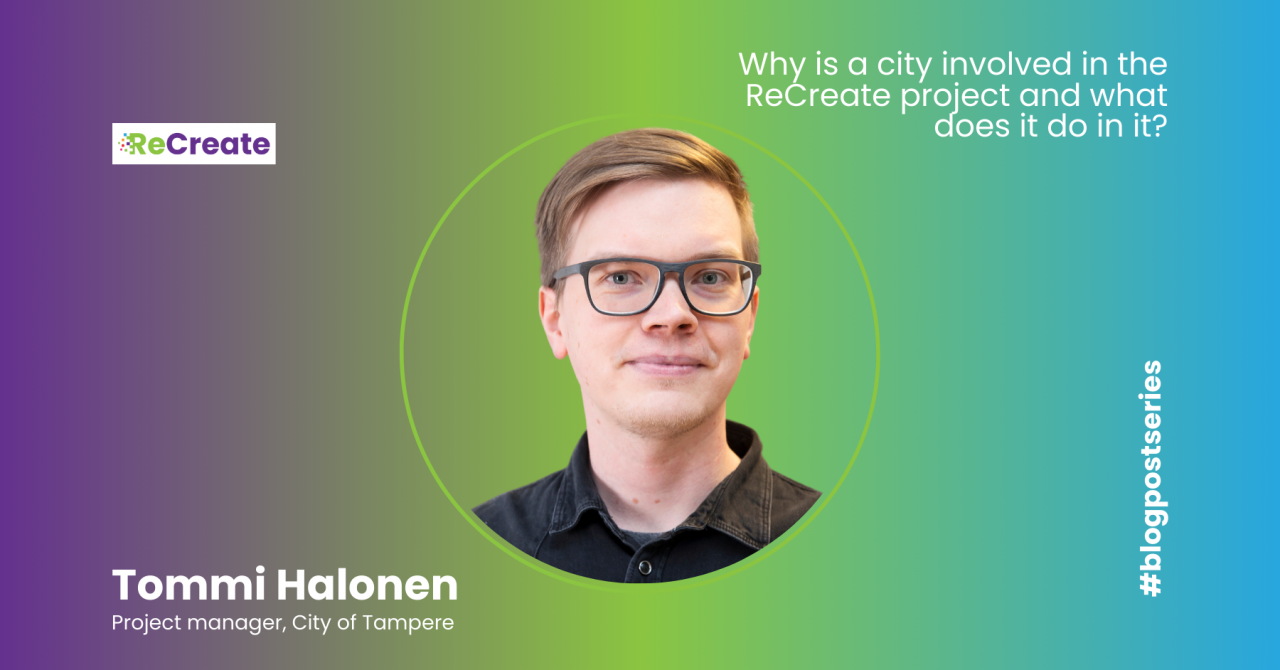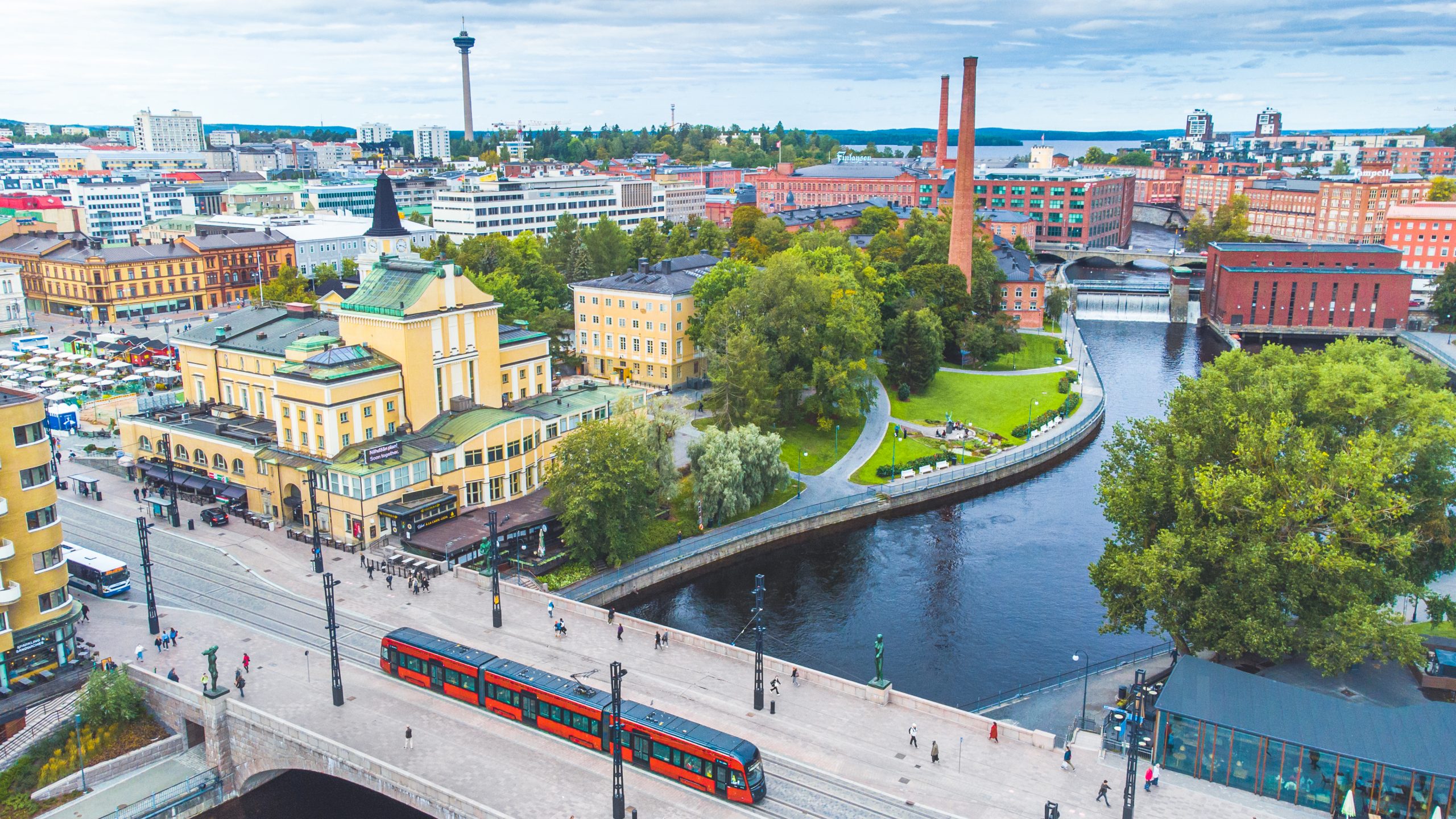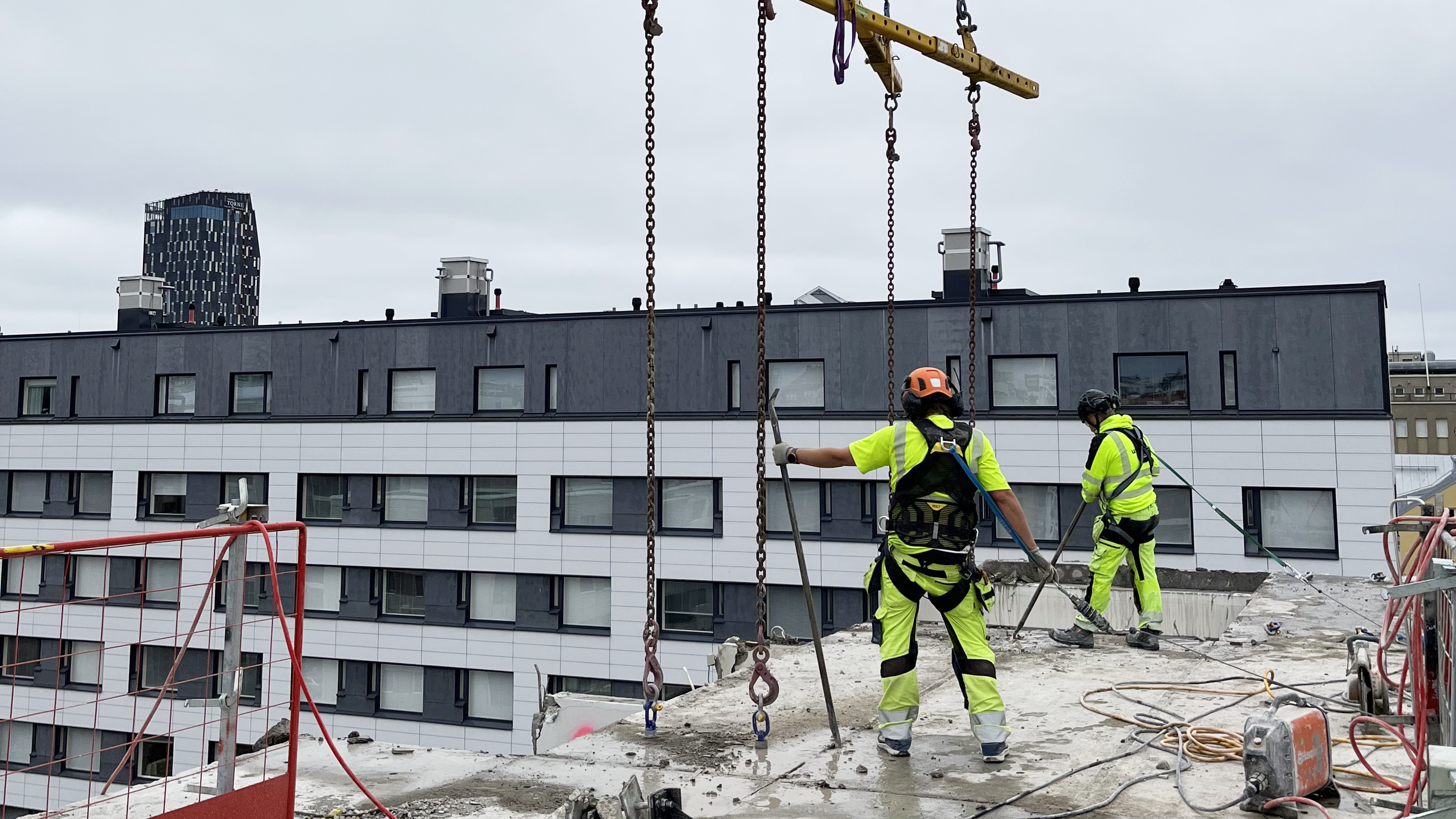Introduction to the report: Legal and technical requirements in reusing precast concrete of the ReCreate project. The full report is available here.
Paul Jonker-Hoffrén, Tampere University
The ReCreate report, Legal and technical requirements in reusing precast concrete, provides a comprehensive analysis of the legal and technical requirements for reusing precast concrete elements in four European countries: Finland, Sweden, the Netherlands, and Germany. It examines regulations at the EU, national, and local levels, focusing on deconstruction and reuse processes, and identifies common challenges and country-specific issues. It represents the understanding of the state of the art until the beginning of 2023. This report is based on general knowledge rather than the experiences of the industrial partners, which will be reported in a forthcoming report. Therefore, some aspects discussed in the current report will be out of date already due to developments in policy.
Deconstruction Norms
Deconstruction and demolition permits are nationally regulated. In Finland and Sweden, the legislation acknowledges reuse and requires demolition permits to consider reusable components. In the Netherlands, a demolition notification is generally sufficient unless environmental laws apply, which can require more comprehensive permits. Germany follows federal and state building codes with more structured requirements. Waste management is governed by the EU Waste Framework Directive, which sets recycling targets but lacks explicit reuse goals, resulting in ambiguity. Finland and Sweden faced uncertainties about whether deconstructed components are classified as waste (until recently), complicating reuse due to administrative burdens. The Netherlands does not consider deconstructed concrete elements as waste if free from hazardous substances, facilitating reuse. This will be tested in the real-life pilot project in the Netherlands, nonetheless. Germany has legal provisions to avoid waste status, but debates continue on their efficacy. Local environmental protection laws generally do not impose special restrictions on deconstruction for reuse in Finland and the Netherlands. Sweden and Germany have raised concerns regarding specific hazardous substances and water protection laws, with Germany expecting clarification through upcoming ordinances. Occupational safety regulations in all countries align with EU directives, ensuring minimum safety standards. Finland and Sweden emphasize public sector and social partner involvement in occupational safety regulations and workplace rules; Germany relies on sector-based organization; the Netherlands supplements national laws with private certification schemes. Detailed work safety plans and checklists guide safe deconstruction practices in all countries at the project level, which are based on national law or decrees.
Norms on Reuse
Technical requirements for reused concrete elements follow the same standards as new materials, primarily based on Eurocodes and national annexes. However, challenges arise in assessing the material properties of reused components due to lack of original documentation and potential degradation, necessitating improved testing standards. Finland and Sweden apply existing standards designed for new products, which may not adequately address reuse-specific concerns. The Netherlands and Germany have developed additional guidelines and standards to better assess existing structures for reuse.
Product approval is nationally controlled, as the EU Construction Products Regulation currently exempts existing products like reused elements. Finland and Sweden lack clear, consensus-based approval processes, leading to ad hoc practices and uncertainty. Germany and the Netherlands have more institutionalized procedures, including certifications and assessment guidelines, though complexities remain. Designer qualifications for reuse projects are regulated nationally; Finland has specific legal requirements and guidelines, while Sweden and the Netherlands have no special legislation, and Germany regulates via state building codes. Building permits for reuse projects generally require case-by-case collaboration with authorities in all countries, reflecting the novelty and evolving nature of reuse practices. Sustainability policies at international, EU, and national levels provide overarching goals supporting reuse but often lack direct enforceability. Recent initiatives in Finland (e.g., circular construction competitions) and municipal programmes in Sweden demonstrate emerging practical incentives for reuse. The Netherlands and Germany integrate sustainability into building codes and climate laws but tend to focus more on operational energy than embodied emissions, indicating room for policy development.
Discussion
Four key cross-cutting barriers hinder large-scale deployment of reuse: (1) ambiguity in waste status and end-of-waste criteria complicates administrative processes; (2) lack of tailored technical requirements for reused materials leads to conservative and cumbersome testing; (3) product approval pathways are unclear or inconsistent, especially in Nordic countries; and (4) sustainability policies are often too general to drive immediate change. The Netherlands stands out positively in waste classification and product approval, while Finland and Sweden are in earlier stages of regulatory adaptation. Germany offers legal options for reuse but faces challenges in standardizing practices. The report emphasizes the need for clearer interpretations, harmonized technical guidelines, streamlined approval processes, and concrete sustainability incentives to accelerate the adoption of reuse.
Conclusion
While the normative frameworks across the four countries share common elements derived from EU directives, their maturity and practical implementation regarding reuse vary significantly. The primary challenge lies not in creating new regulations but in adapting existing ones to explicitly support reuse of building components. Finland and Sweden are developing foundational practices, particularly in product approval, whereas the Netherlands and Germany have more progressive, institutionalized systems. Cross-country knowledge exchange and stakeholder collaboration are vital for overcoming barriers. The report lays the groundwork for further empirical research and policy development to foster circular economy transitions in construction.
The report, as a general overview of legal and technical requirements in the ReCreate project countries, highlights comparative insights across countries, facilitating understanding of shared challenges and unique national circumstances in promoting the reuse of precast concrete elements.


